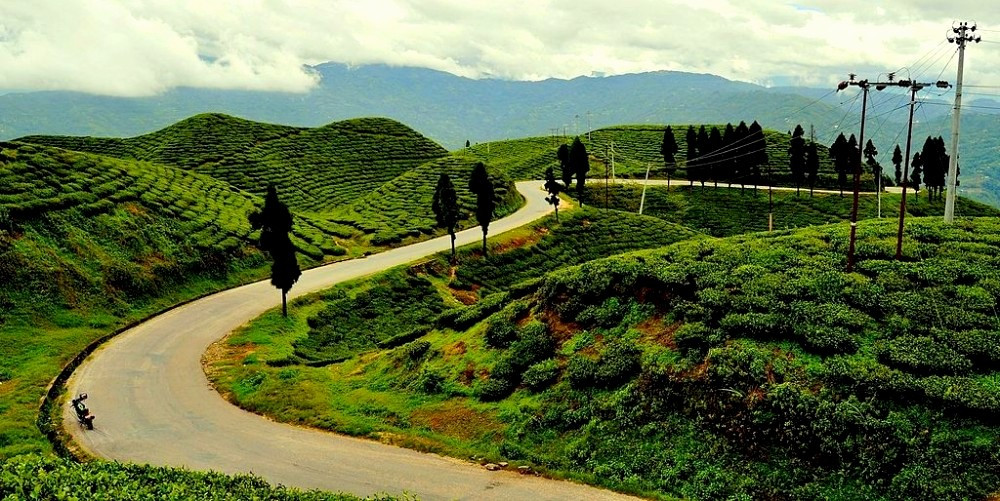Rara Lake
Rara Lake is a stunning natural treasure located in the remote Mugu District of northwestern Nepal. As the largest lake in the country, Rara spans an area of approximately 10.8 square kilometers and sits at an altitude of around 2,990 meters above sea level. The lake is the centerpiece of Rara National Park, which was established in 1976 to preserve the unique beauty and biodiversity of the region.
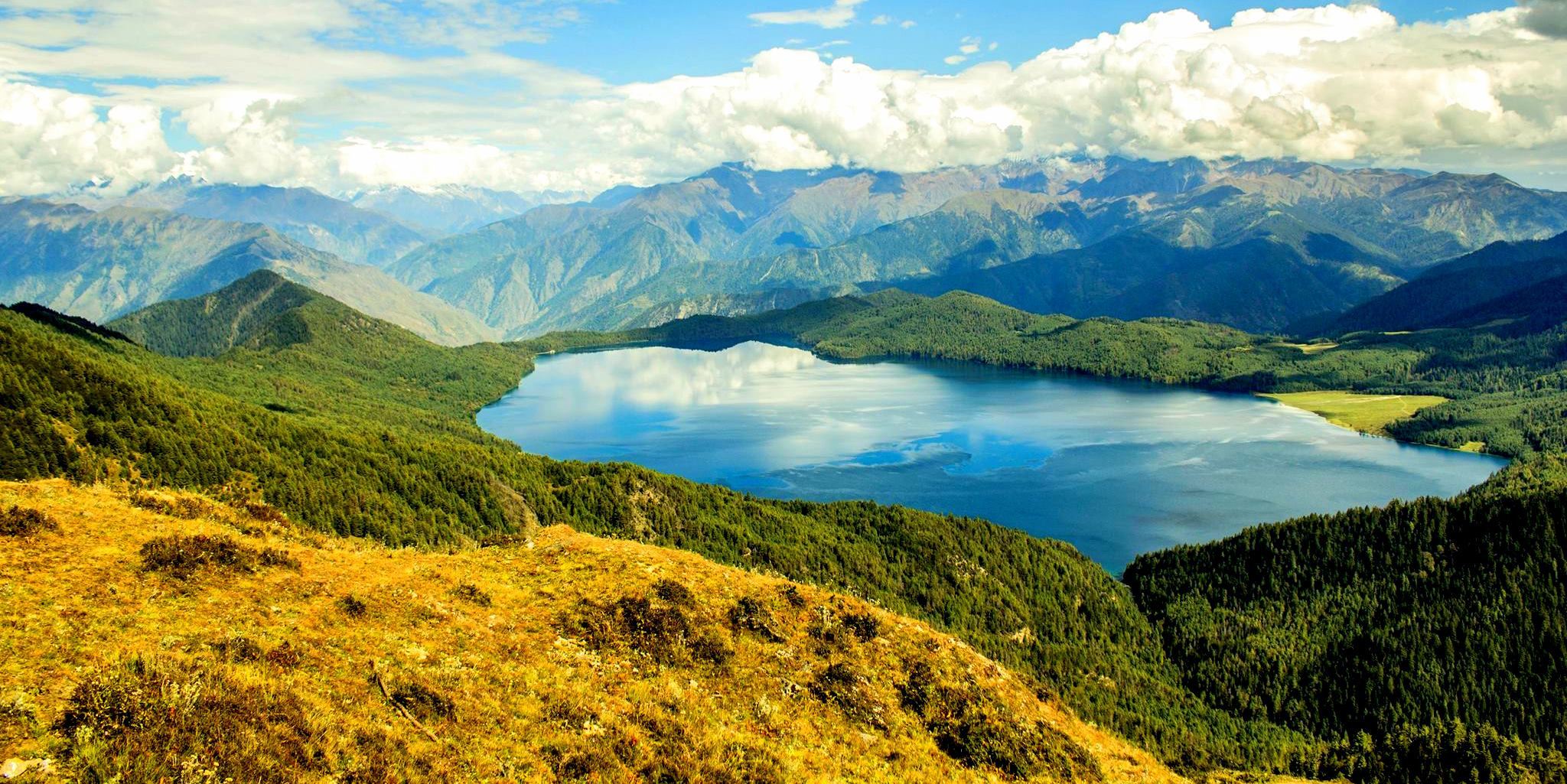
Key Attractions at Rara Lake
-
Pristine Waters: The lake is renowned for its crystal-clear waters that reflect the surrounding hills and change colors with the seasons.
-
Diverse Ecosystem: Rara National Park is home to a variety of flora and fauna, including several rare species of wildlife like the red panda and musk deer, as well as an array of bird species.
-
Scenic Trails: The area offers numerous hiking trails that provide panoramic views of the lake and the lush forests of the national park.
-
Boating and Fishing: Visitors can enjoy boating on the calm waters of Rara Lake or try their hand at fishing, with the local authorities regulating these activities to preserve the natural environment.
-
Cultural Experience: The region around Rara Lake is sparsely populated but rich in local culture. The indigenous communities, such as the Thakuris and Jumli people, have unique traditions and lifestyles that visitors can learn about during their stay.
Best Time to Visit: The best season to visit Rara Lake is typically during the autumn months from September to November when the weather is clear, and the views of the surrounding mountains are spectacular. Spring, from April to June, is also a great time to visit, with blooming rhododendrons and moderate temperatures.
How to Get There: Reaching Rara Lake involves a journey that is part of the adventure. Visitors can take a flight from Kathmandu to Nepalgunj and then another short flight to Talcha Airport near Rara. From there, it's a few hours hike to the lake. Alternatively, more intrepid travelers can undertake a longer trek from Jumla or other nearby towns, which takes several days but offers a deeper immersion into the remote landscapes of the region.
Rara Lake is a must-visit for those looking to experience the tranquility and untouched beauty of one of Nepal’s most picturesque locations. It's a perfect destination for nature lovers, trekkers, and anyone seeking solitude away from the bustling tourist spots.
Khaptad National Park
Khaptad National Park is a hidden gem located in the far western region of Nepal, spanning four districts: Bajhang, Bajura, Achham, and Doti. Established in 1984, the park covers an area of about 225 square kilometers and is named after Khaptad Baba, a revered local hermit who lived in the area. This park offers a serene and secluded environment, largely untouched by the main tourist circuits, making it a perfect spot for those seeking tranquility and a deep connection with nature.
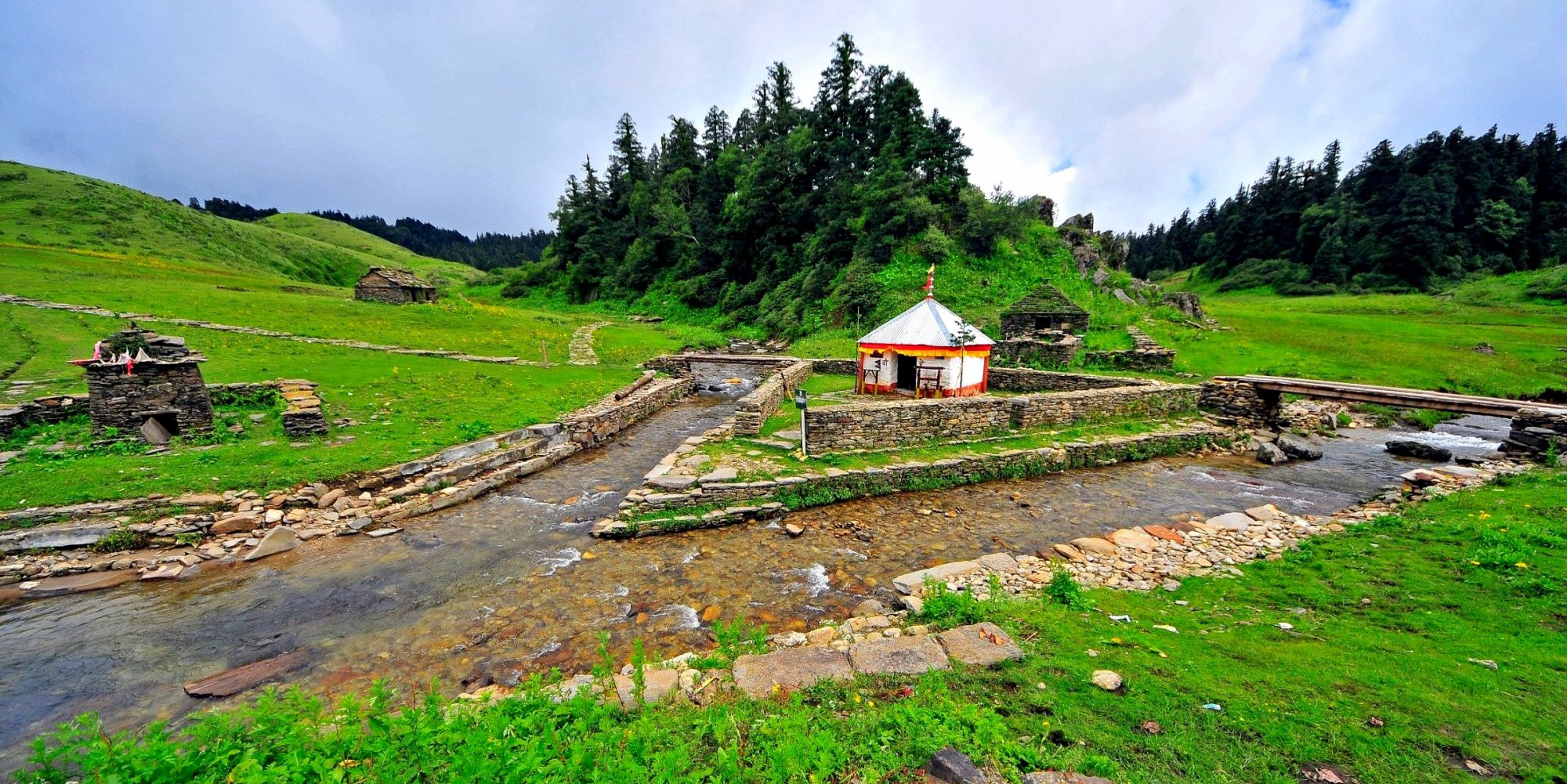
Key Attractions at Khaptad National Park:
-
Diverse Landscapes: The park features a mix of landscapes including rolling green hills, moorlands, steep slopes, and streams, interspersed with more than 50 lakes and lush oak and rhododendron forests.
-
Rich Biodiversity: Khaptad National Park is a haven for biodiversity, home to approximately 567 species of flora, including medicinal herbs and rhododendron forests. The fauna includes a variety of wildlife such as leopards, Himalayan black bears, wild dogs, and numerous species of birds, making it ideal for bird watchers and wildlife enthusiasts.
-
Trekking and Hiking: The park offers numerous Khaptad National Park trails that cater to both novice and experienced trekkers, providing stunning views and the chance to explore the diverse ecosystems within the park boundaries.
-
Spiritual Sites: The park is also known for its spiritual significance with several religious sites, including the Ashram of Khaptad Baba, and hosts the Khaptad Baba Festival, which attracts many pilgrims and spiritual seekers.
Best Time to Visit: The best time to visit Khaptad National Park is during spring (March to May) and autumn (September to November). These seasons offer clear skies and moderate weather, ideal for hiking and experiencing the full splendor of the park’s flora and fauna.
How to Get There: Getting to Khaptad National Park involves multiple stages. Travelers typically fly from Kathmandu to Nepalgunj or Dhangadhi, followed by a drive to Silgadhi, Doti. From Silgadhi, a trek of approximately 6-7 hours is required to enter the park area. This journey through the less traveled roads and trails of Nepal adds to the adventure and allure of visiting Khaptad.
Khaptad National Park is a sanctuary of natural beauty and peace, ideal for those interested in ecotourism in Khaptad and seeking a deeper understanding of the region’s flora and fauna. It's a place that not only offers breathtaking landscapes and wildlife encounters but also a profound sense of solitude and introspection.
Limpiyadhura, Lipulekh, and Kalapani
Limpiyadhura, Lipulekh, and Kalapani are three regions located in the far western corner of Nepal, close to the borders of India and China. This area is steeped in natural beauty and geopolitical significance, offering some of the most remote and pristine landscapes in Nepal. These regions are less frequented by tourists due to their location and the rugged terrain, making them ideal for those seeking adventure and solitude.
Key Attractions
-
Trekking and Exploration: The area is known for its challenging treks and breathtaking views. Trekking in Limpiyadhura provides a rugged, pristine environment perfect for experienced trekkers looking to explore untouched landscapes. The Lipulekh pass adventures offer a historic trade route used by pilgrims traveling to Kailash Mansarovar in Tibet, featuring dramatic vistas and rugged trails.
-
Strategic Location: Limpiyadhura, Lipulekh, and Kalapani are strategically significant as they sit near the trijunction of Nepal, India, and China. This area offers a unique insight into the geopolitical nuances and historical importance of the region.
-
Remote Wilderness: As some of the remote areas in Nepal Kalapani, these regions offer untouched natural beauty. The landscapes are characterized by deep valleys, high alpine forests, and scenic mountain views, providing a haven for nature lovers and photographers.
Best Time to Visit: The optimal time to visit these regions is during the pre-monsoon months of April and May or post-monsoon months from September to November. These periods generally offer clearer weather, safer travel conditions, and better visibility of the majestic Himalayan peaks.
How to Get There: Access to Limpiyadhura, Lipulekh, and Kalapani can be challenging due to the rugged terrain and the lack of well-developed infrastructure. The journey typically involves multiple stages, including a flight from Kathmandu to a nearby city like Darchula, followed by a long trek through remote mountain paths. The area's isolation is part of its allure, offering an adventure that is both challenging and rewarding.
Considerations: Travelers interested in visiting these areas should be well-prepared and experienced in high-altitude trekking. It is advisable to travel with a guide familiar with the terrain and to be fully equipped for sudden weather changes and basic survival situations due to the regions' remote nature.
Limpiyadhura, Lipulekh, and Kalapani represent the quintessence of Nepal’s hidden, wild frontiers, promising an adventure of a lifetime for those who dare to explore their remote landscapes. These areas are perfect for those looking to delve deep into Nepal’s less-traveled paths, offering profound natural beauty and a peek into the area's intriguing geopolitical backdrop.
Dolpo Region
The Dolpo Region in Nepal is a high-altitude, culturally Tibetan region that offers some of the most remarkable landscapes in the Himalayas. Largely isolated from the rest of Nepal due to its remote location and rugged terrain, Dolpo remains one of the least accessible and most fascinating regions for trekkers and cultural enthusiasts.
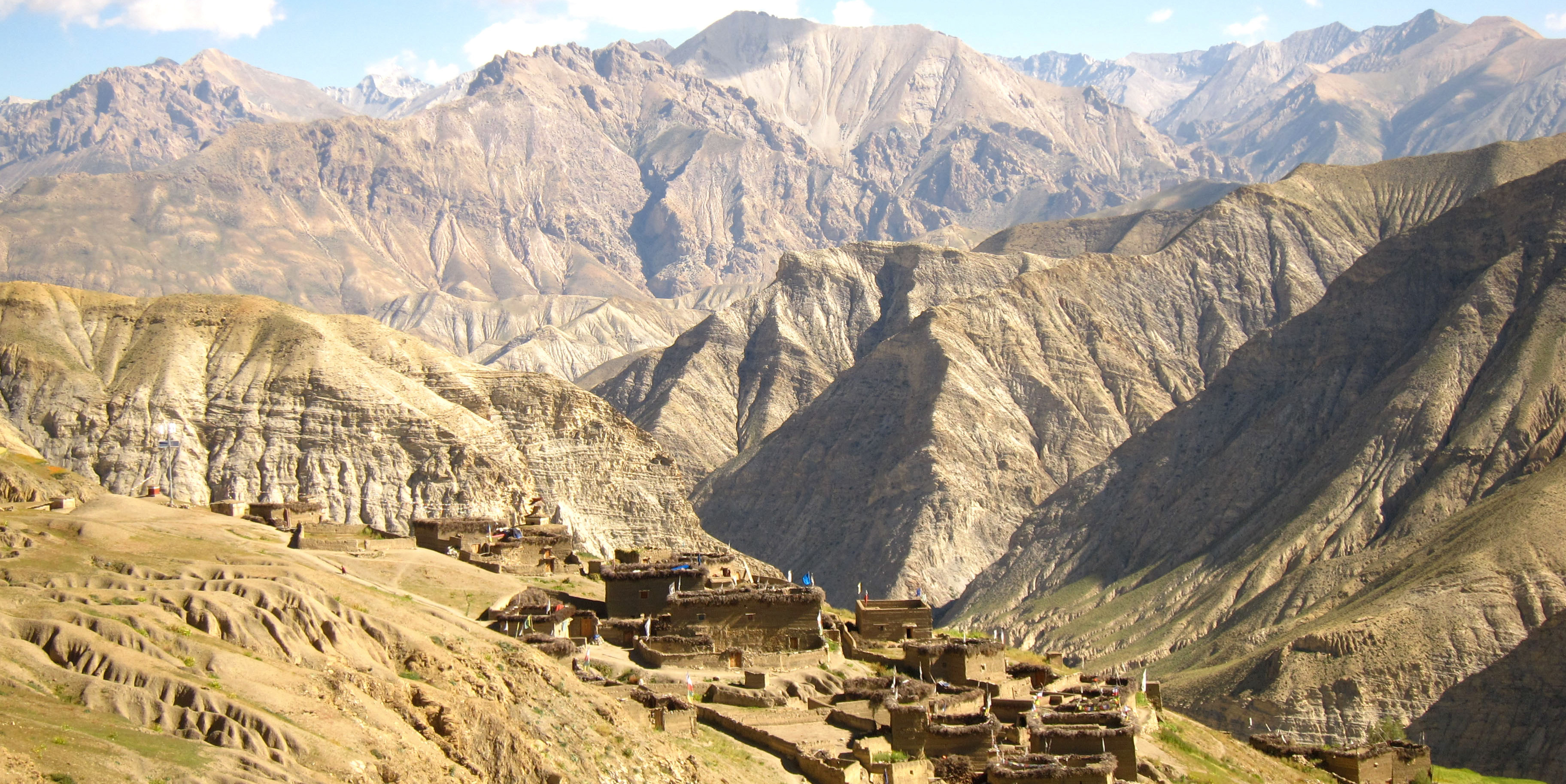
Key Attractions in the Dolpo Region
-
Shey Phoksundo National Park: Home to the stunning Shey Phoksundo Lake, this national park is a highlight of the region, with its crystal-clear turquoise waters set against a backdrop of dramatic cliffs and snowy peaks.
-
Ancient Monasteries: The region is dotted with centuries-old Buddhist monasteries, including the famous Shey Gompa, which is over 800 years old and a key site for Buddhist pilgrimages.
-
Traditional Tibetan Culture: Dolpo is one of the few places where traditional Tibetan culture remains largely intact. The local people, known as Dolpopas, live in a way that has changed little over centuries, offering a unique cultural experience.
-
Wildlife: The area's diverse ecosystems are home to a variety of wildlife, including the elusive snow leopard, blue sheep, and Himalayan griffon vultures.
-
Trekking Routes: Dolpo offers challenging treks through remote valleys and high passes, with the Dolpo region cultural tours providing an intimate glimpse into the lives of the local communities. The hidden valleys of Dolpo are particularly captivating, offering untouched natural beauty and solitude.
Best Time to Visit: The best time to visit the Dolpo Region is during the pre-monsoon months of April through June and the post-monsoon months of September through November. These periods typically offer clearer skies and more stable weather, which is crucial for trekking in such high-altitude conditions.
How to Get There: Accessing Dolpo is challenging and part of the adventure. Most travelers fly from Kathmandu to Nepalgunj and then to Juphal, followed by several days of trekking. Due to the lack of roads and the tough terrain, much of Dolpo can only be explored on foot or by horseback.
Considerations: Traveling to Dolpo requires a high level of physical fitness and preparation, as the treks involve long days of walking in a remote environment at high altitudes. Permits are also required to enter many parts of Dolpo, given its status as a protected area.
The Dolpo Region is a mesmerizing blend of natural beauty and cultural richness. It's a destination for those who are looking to explore beyond the conventional trekking routes and are eager to experience a part of the world that has remained largely untouched by modern influences.
Ilam
Ilam is a picturesque district in eastern Nepal, renowned for its lush green landscapes and sprawling tea gardens. Often referred to as the "Tea Capital of Nepal," Ilam attracts visitors with its pristine natural beauty and serene environment, providing a stark contrast to the snow-capped peaks that most associate with Nepal.
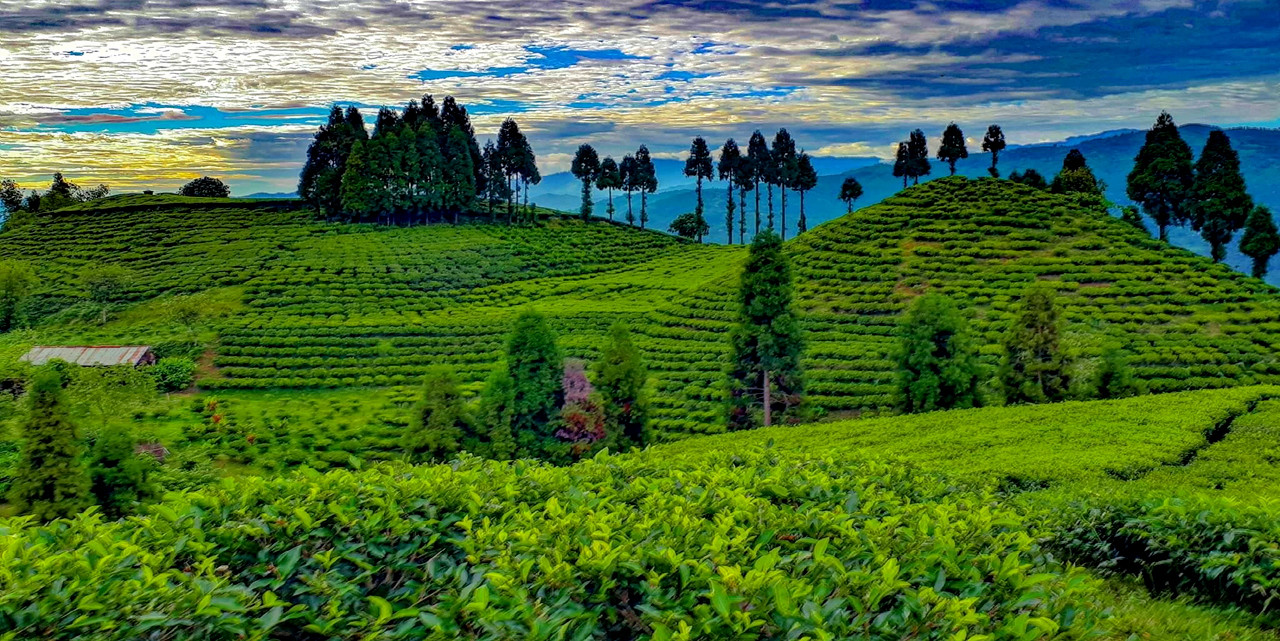
Key Attractions in Ilam
-
Tea Gardens: Ilam is famous for its tea, which is considered among the best in the world. Visitors can tour the Ilam tea estates, witnessing the entire tea production process from leaf plucking to processing, and sample fresh teas directly from the source.
-
Scenic Landscapes: The district offers some of the most scenic spots in Ilam, with rolling hills and vibrant greenery creating a perfect backdrop for nature lovers and photographers. Ilam photography spots are plentiful, offering opportunities to capture the stunning vistas of terraced tea plantations and rural life.
-
Mai Pokhari: This sacred pond is nestled within a dense forest and is a designated Ramsar site due to its rich biodiversity, including several rare and endangered species.
-
Antu Danda: Known for its breathtaking views of the sunrise over the Himalayas, Antu Danda is a great spot for those looking to experience the natural beauty of the area from an elevated perspective.
-
Kanyam: Famous for its high-quality tea gardens, Kanyam provides picturesque landscapes that are ideal for leisurely walks and picnics.
Best Time to Visit: The best time to visit Ilam is between October and November when the weather is clear and the views of the surrounding mountains are spectacular. The spring months of March to May are also delightful, offering mild weather and the sight of rhododendrons in full bloom.
How to Get There: Ilam is accessible via a scenic road journey from Kathmandu, which takes about 14 hours. Alternatively, visitors can take a short flight from Kathmandu to Bhadrapur, followed by a 3-hour drive to Ilam. The journey itself, through winding hill roads, is as picturesque as the destination.
Considerations: Ilam’s laid-back atmosphere and stunning landscapes make it an ideal destination for those looking to escape the hustle and bustle of city life and immerse themselves in nature and tranquility. Whether it’s exploring the vast tea gardens, hiking in the hills, or just relaxing with a cup of fresh local tea, Ilam offers a refreshing experience that is distinct from other parts of Nepal.
Ilam serves not only as a beacon for tea enthusiasts but also as a haven for nature lovers and photographers, making it a must-visit for anyone traveling to Nepal in search of peace and natural beauty.
Kunchhal Village
Kunchhal Village in the Makwanpur district of Nepal is a hidden gem that offers a unique glimpse into traditional Nepalese village life. This quaint village is relatively unknown to the mainstream tourist paths, making it an ideal spot for those looking to experience an authentic slice of rural Nepal away from the usual tourist spots.
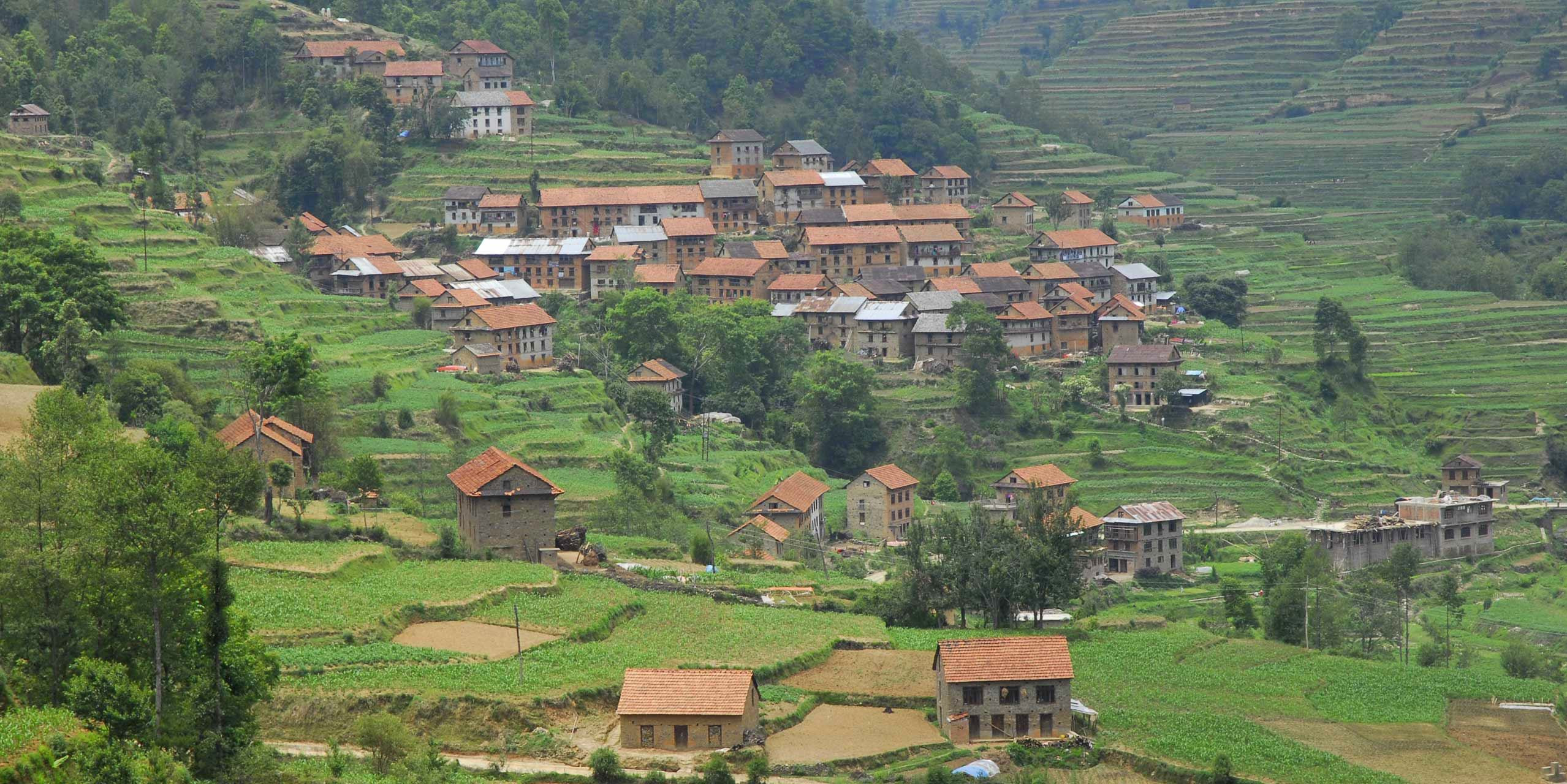
Key Attractions in Kunchhal Village
-
Homestays: Kunchhal Village is an excellent place for homestays, where visitors can live with local families, participate in daily household activities, and learn about the local customs and traditions. This provides an authentic Nepali village experience that is both educational and heartwarming.
-
Agricultural Lifestyle: The village's economy is predominantly agricultural, offering visitors a chance to understand and participate in farming activities, such as planting or harvesting crops, depending on the season.
-
Cultural Immersion: Engage with the local community to learn about their traditional crafts, folk music, and dances. Visitors often get the opportunity to dress in traditional attire and join in local festivals and celebrations.
-
Natural Beauty: Surrounded by lush forests and agricultural fields, Kunchhal offers scenic beauty and a peaceful environment. The village's setting provides opportunities for gentle hikes and nature walks where one can enjoy the serene landscape and spot local wildlife.
Best Time to Visit: The best time to visit Kunchhal Village is during the spring (March to May) and autumn (September to November) seasons when the weather is mild and the skies are clear, offering the best conditions for outdoor activities and cultural exploration.
How to Get There: Kunchhal Village is accessible via road from Kathmandu, which takes about 4-5 hours. The journey involves traveling south from the capital towards the district of Makwanpur, known for its rich cultural heritage and natural beauty.
Considerations: Visiting Kunchhal Village is about embracing the simplicity and warmth of Nepali rural life. It’s important for visitors to be respectful of local customs and open to experiencing life as the villagers live it. Staying in a homestay requires an open mind and flexibility, as amenities are basic but the hospitality is profoundly genuine and heartwarming.
Kunchhal Village is perfect for those looking to step off the beaten path and connect deeply with the rhythms of Nepali rural life. It offers a profound cultural exchange and the opportunity to make meaningful connections with the local community, ensuring a memorable and enriching visit.
Tansen
Tansen is a charming historic town nestled in the hills of the Palpa district in western Nepal. Known for its rich cultural heritage and panoramic views of the Himalayas, Tansen offers a delightful mix of history, architecture, and natural beauty, making it a captivating destination for those looking to explore beyond Nepal's more frequented tourist spots.
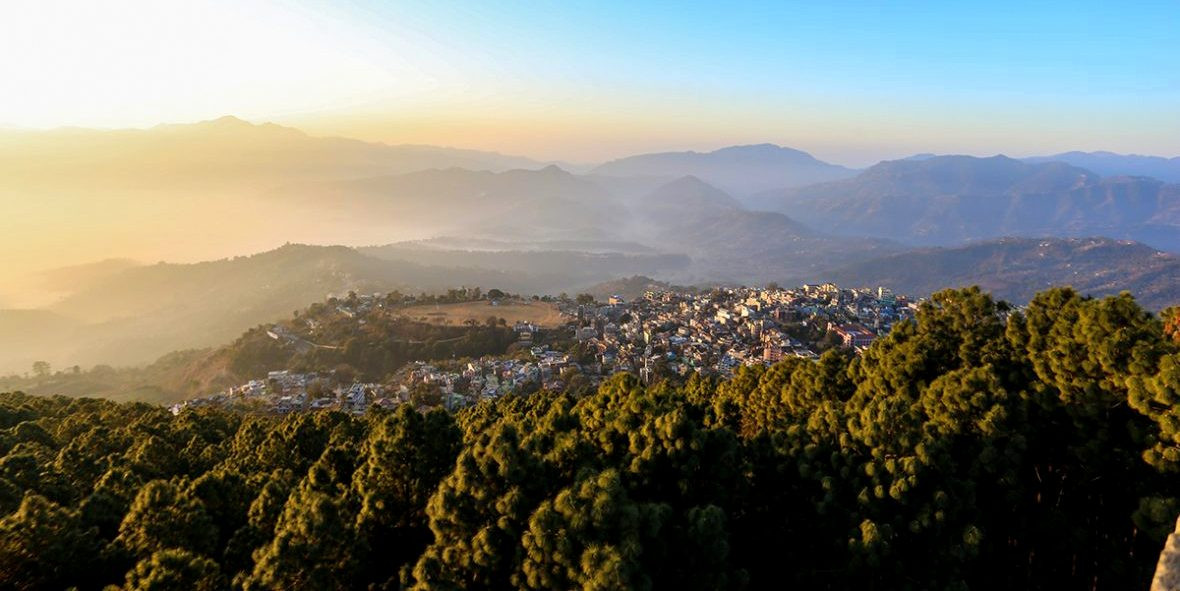
Key Attractions in Tansen
-
Rani Mahal: Often referred to as the "Taj Mahal of Nepal," this historic palace is located on the banks of the Kali Gandaki River. It was built in the 19th century and is a stunning example of local architecture.
-
Tansen Durbar: This ancient palace complex in the heart of Tansen serves as a museum and offers a glimpse into the rich history and culture of the region.
-
Srinagar Hill: Offering one of the best spots for panoramic views of both the Himalayan ranges and the Terai plains, Srinagar Hill is perfect for sunrise and sunset views.
-
Historic Tansen exploration: Tansen's old town is a labyrinth of narrow, cobbled streets lined with traditional Newari architecture, artisan shops, and local markets. Exploring these streets gives visitors a real taste of ancient Nepali town life.
-
Palpali Dhaka: Known for its unique handwoven fabric called Dhaka, Tansen is the perfect place to buy traditional Nepali garments and souvenirs.
Best Time to Visit: The ideal time to visit Tansen is from October to November and from March to April when the weather is mild, and the skies are clear, providing the best views of the surrounding mountains and valleys.
How to Get There: Tansen is easily accessible by road from major cities like Pokhara and Kathmandu. The drive from Pokhara takes about 5 hours and passes through scenic landscapes, including views of the river valleys and mountains.
Considerations: Tansen’s moderate altitude makes it a pleasant year-round destination, though winters can be quite cold. The town’s steep hills and narrow streets are best explored on foot, so comfortable walking shoes are a must.
Tansen not only offers a peaceful retreat from the hustle and bustle of Nepal's larger cities but also serves as a window into the country's dynamic history and culture. With its friendly locals, exquisite Newari architecture, and breathtaking natural surroundings, Tansen is a must-visit for anyone seeking a deeper understanding of Nepal's diverse cultural tapestry.
Pharping
Pharping is a vibrant town located just south of Kathmandu in the Dakshinkali Municipality of Nepal. Renowned for its religious significance and natural beauty, Pharping is a place where Tibetan Buddhist culture thrives and history is etched into the landscape. It's an essential destination for spiritual seekers and those interested in Buddhist practices.
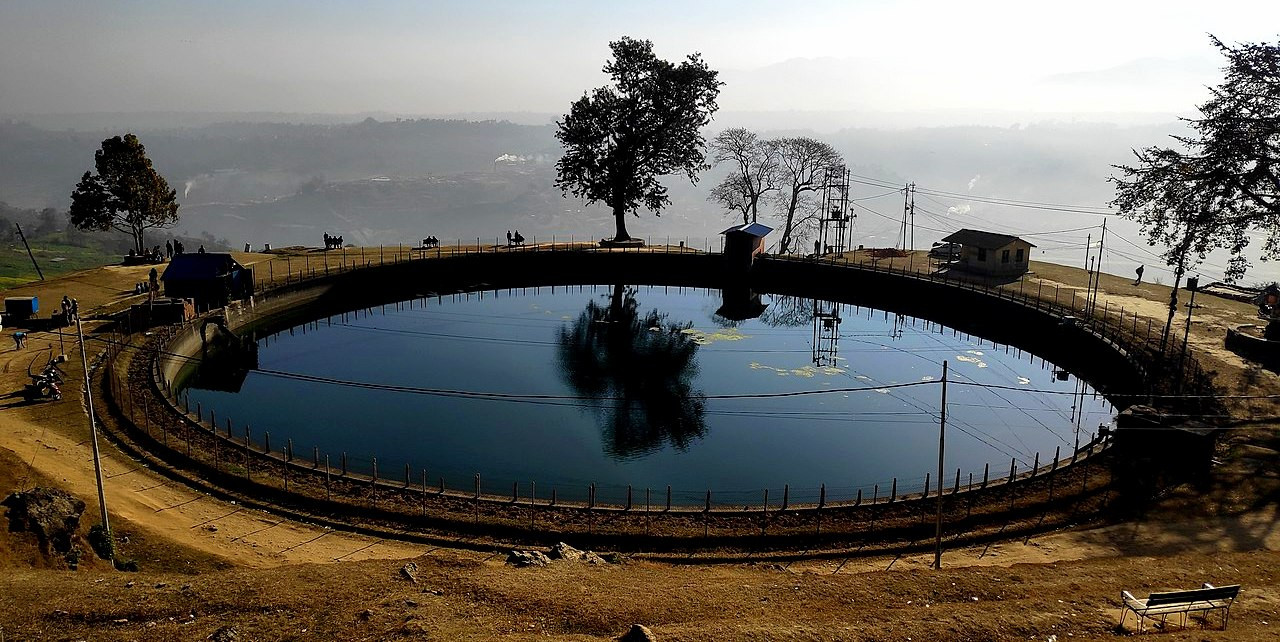
Key Attractions in Pharping
-
Sacred Caves: Pharping is famous for its sacred caves, including the Asura Cave and the Yangleshö Cave. These caves are believed to be the sites where the revered Buddhist figure Padmasambhava (Guru Rinpoche) attained a level of enlightenment. Pilgrims from around the world visit these caves for meditation and prayer.
-
Monasteries and Temples: The town is dotted with several monasteries and temples, rich in Tibetan art and architecture. These include the beautiful Rigzin Phodrang Monastery and the Vajrayogini Temple, which are centers of learning and practice for Buddhist monks and nuns.
-
Dakshinkali Temple: Located close to Pharping, this temple is dedicated to the Hindu goddess Kali. It is one of the main places of worship and animal sacrifice, attracting pilgrims especially during the Dashain festival.
-
Natural Scenery: Surrounded by lush hills and rice fields, Pharping offers a tranquil environment and several hiking opportunities. The area is perfect for those looking to escape the hustle of Kathmandu and enjoy some peace in nature.
Best Time to Visit: Pharping is accessible and beautiful year-round, but the best times to visit are during the spring (March to May) and autumn (September to November) seasons when the weather is mild and the skies are clear.
How to Get There: Pharping is conveniently located about an hour's drive from Kathmandu, making it an easy day trip for visitors staying in the capital. Public buses and taxis are readily available to take you to Pharping from Kathmandu.
Considerations: Pharping's religious sites are active places of worship. Visitors should be respectful, dress modestly, and behave appropriately. Photography may be restricted in certain areas, especially inside the monasteries and temples.
Pharping offers a unique blend of spiritual heritage and natural beauty, making it a compelling stop for those exploring the Kathmandu Valley. Whether you're drawn to its religious sites or simply looking to enjoy some serene landscapes, Pharping provides a meaningful and enriching experience away from the city's chaos.
Muktinath Temple
Muktinath Temple is a sacred site revered by both Hindus and Buddhists, located at an altitude of 3,710 meters in the Mustang District of Nepal. This ancient temple, also known as Chumig Gyatsa, is part of the Annapurna Circuit, one of the most popular trekking routes in Nepal. It stands as a symbol of the religious harmony found in Nepal where both Hindu and Buddhist elements are intricately interwoven in its architecture and spiritual practices.
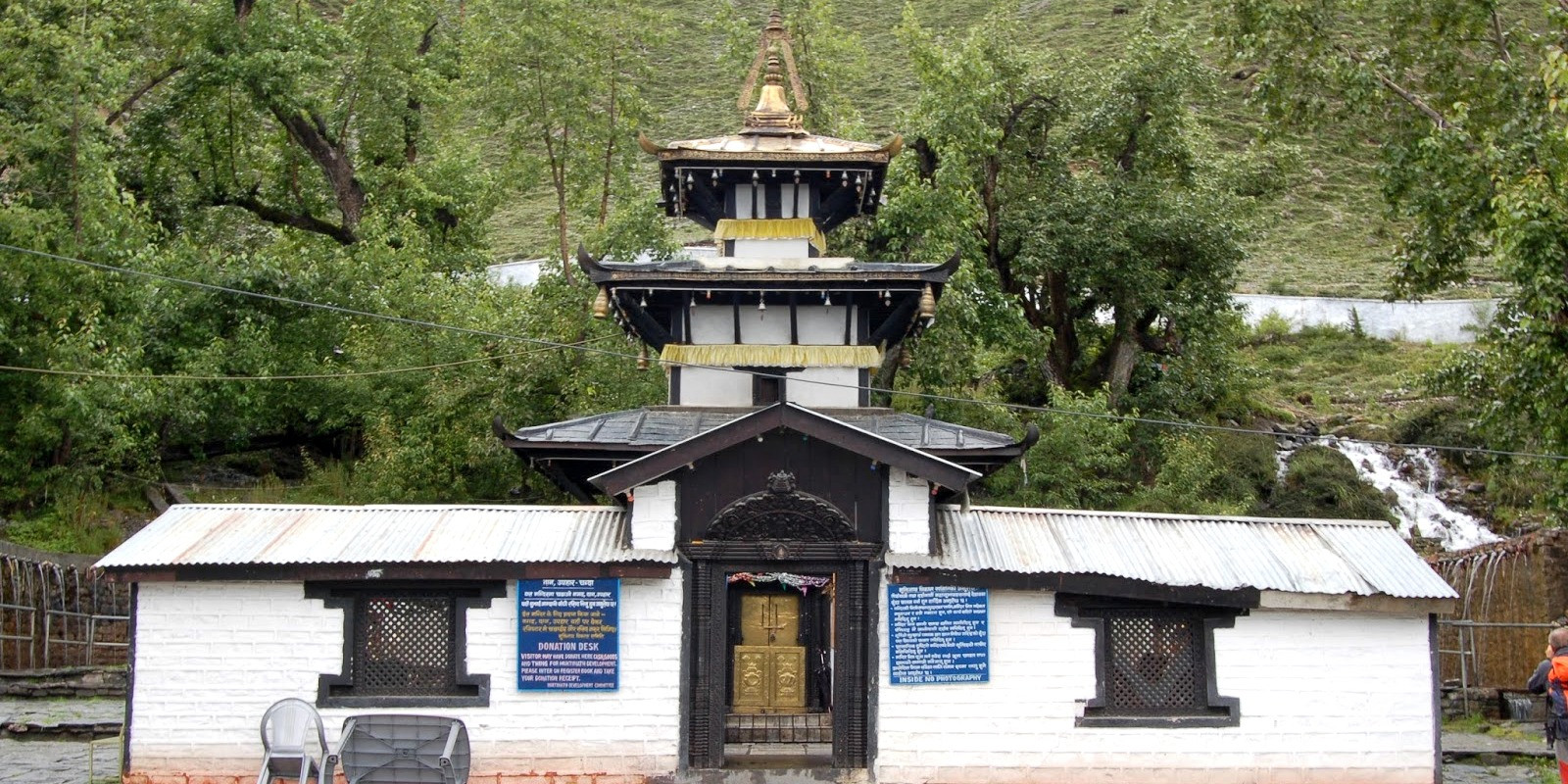
Key Attractions at Muktinath Temple
-
Eternal Flame: Inside the temple, there is a miraculous eternal flame that burns continuously, fed by natural gas underground. This flame is considered sacred and symbolizes divine light.
-
108 Water Spouts: Outside the temple, visitors can see 108 bull-faced spouts from which sacred water flows. Pilgrims often take ritual baths here, believing it brings salvation and purifies the soul.
-
Stunning Natural Surroundings: The temple offers breathtaking views of the Annapurna and Dhaulagiri ranges. Its remote location adds to its mystical appeal, making the journey to Muktinath both a physical and spiritual pilgrimage.
-
Jwala Mai Temple: Nearby, the Jwala Mai Temple houses a spring and three eternal flames known as the holy flame from rock, which further adds to the area’s religious significance.
-
Cultural Diversity: The area around Muktinath is a cultural melting pot, with traditions from Tibetan Buddhists, Thakalis, and Hindus from different ethnic backgrounds converging in this sacred space.
Best Time to Visit: The best time to visit Muktinath Temple is from March to May and again from September to November when the weather is most favorable for trekking. During these months, the skies are generally clear, offering the best views of the surrounding mountain ranges.
How to Get There: Muktinath Temple can be reached via different routes:
Trekking: The most popular way to reach Muktinath is by trekking the Annapurna Circuit. It involves several days of hiking through diverse landscapes and cultural villages.
Flight: A quicker option involves flying from Pokhara to Jomsom and then trekking for 1-2 days to reach the temple.
Road: Recently, roads have been developed that allow buses and jeeps to drive closer to Muktinath, reducing the trekking time significantly for those who prefer not to hike.
Due to its high altitude, visitors should be mindful of altitude sickness and prepare accordingly. It is important to acclimatize properly and stay hydrated. Additionally, as a sacred site, visitors should respect local customs and traditions — dressing modestly, not disturbing worshippers, and adhering to site-specific conduct rules.
Muktinath Temple is not just a destination but a journey that offers a profound spiritual experience amidst some of the world’s most stunning high-altitude landscapes. It is a place of pilgrimage that provides peace, solace, and a sense of unity among diverse religious beliefs.
Halesi Mahadev
Halesi Mahadev, also known as the "Pashupatinath of the East," is one of the most sacred and significant pilgrimage sites in eastern Nepal. It is located in the Khotang District and is revered by both Hindus and Buddhists. The temple is set within a series of mysterious caves on a hilly forested area above the holy rivers of Dudh Koshi and Sun Koshi.
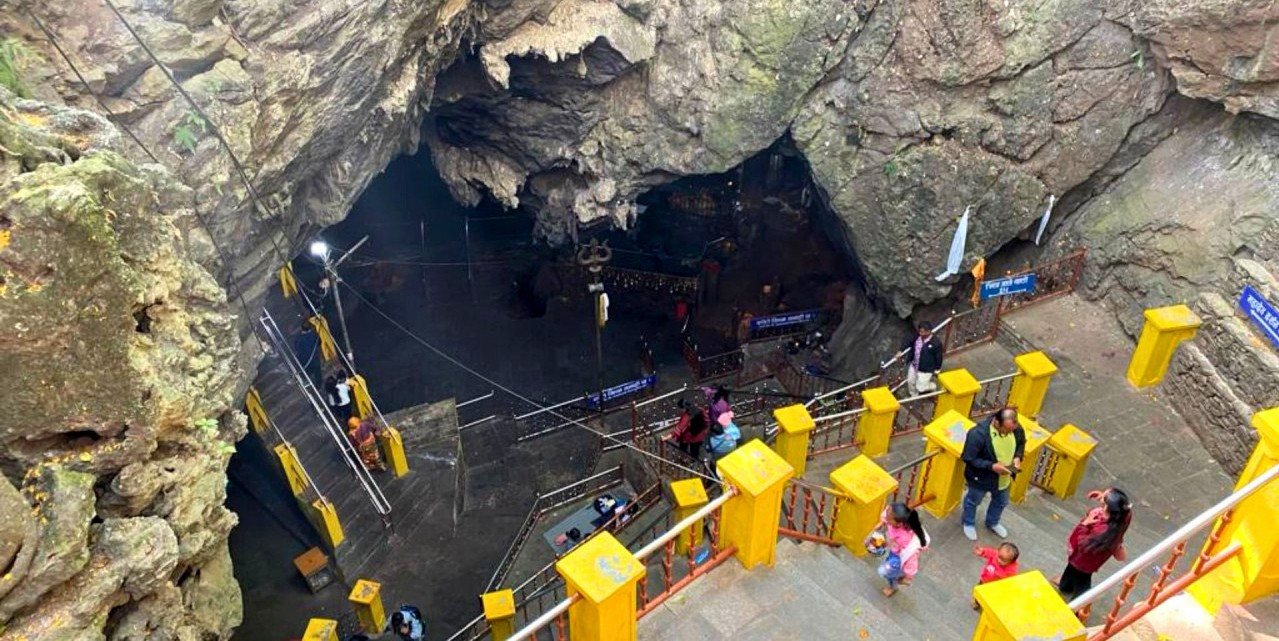
Key Attractions at Halesi Mahadev:
-
Sacred Caves: The Halesi Mahadev temple is nestled within two main caves, which represent the three eyes of Lord Shiva. These caves have been a site of pilgrimage for thousands of years. The caves are adorned with various religious symbols and are considered to be a natural representation of Lord Shiva.
-
Religious Harmony: Reflecting Nepal's unique blend of Hinduism and Buddhism, the site is equally sacred to both communities. Buddhists revere it as the caves where Padmasambhava, the founder of Tibetan Buddhism, meditated.
-
Vibrant Festivals: The temple hosts several major festivals throughout the year, including Shivaratri and Bala Chaturdashi, drawing thousands of pilgrims who come to perform rituals and honor their ancestors.
-
Stunning Natural Environment: The surrounding area is rich in biodiversity and offers picturesque views of the eastern hills of Nepal. The journey to Halesi itself is scenic, with lush landscapes and traditional villages along the route.
Best Time to Visit: The best time to visit Halesi Mahadev is during the autumn and spring seasons when the weather is clear and mild. This is especially true from September to November and from March to May. These periods also coincide with major Hindu festivals, which can be a profoundly moving time to experience the site's spiritual intensity.
How to Get There: Halesi Mahadev is accessible via road from Kathmandu, and the journey typically takes around 7-8 hours. The roads are winding and traverse through hill tracts, offering scenic views and a glimpse into rural Nepalese life. Recently, road conditions have improved, making access easier for visitors.
Considerations: Visitors to Halesi Mahadev should prepare for a moderately challenging journey, especially if traveling by road due to the winding routes and potential for motion sickness. It's also advisable to respect the sacred nature of the site by dressing modestly and following local customs, particularly during your time within the temple and caves.
Halesi Mahadev offers not just a pilgrimage but an adventure into the heart of Nepal's spiritual and natural beauty. Its combination of religious significance, natural splendor, and cultural unity makes it a must-visit destination for those looking to delve deeper into Nepal's diverse cultural and religious heritage.
Nepal is brimming with lesser-known treasures that offer a deeper look into its natural beauty and rich cultural fabric. From the serene Rara Lake to the sacred Halesi Mahadev, these 10 hidden gems provide unique experiences that go beyond the well-trodden paths. Exploring these destinations not only promises stunning scenery and enriching cultural encounters but also supports local communities and sustainable tourism. Whether you're trekking through remote valleys, exploring ancient monasteries, or enjoying local traditions, these places are must-visits for those seeking a more profound connection with Nepal's diverse offerings.
FAQs for 10 Places Most of the Travelers Miss In Nepal; You Shouldn't!
Q: What is the best time of year to visit these lesser-known destinations in Nepal?
A: The optimal times are during the pre-monsoon (March to May) and post-monsoon (September to November) seasons, offering clear weather and dry conditions ideal for exploring.
Q: Are there any specific permits required for visiting these areas?
A: Yes, areas like Dolpo, Mustang, and near border zones typically require special permits. Consulting with a travel company like Relax Getaways can provide up-to-date information.
Q: How difficult are the treks to these locations?
A: Difficulty varies. Places like Rara Lake offer moderate treks, whereas regions like Limpiyadhura are more challenging and suited for experienced trekkers.
Q: What are the accommodation options in these lesser-known places?
A: Options range from basic homestays and guesthouses to camping sites, with luxury accommodations being rare. Planning ahead is crucial.
Q: Can I visit these places on my own, or do I need a guide?
A: Some areas can be navigated independently, but a local guide is recommended for most, especially remote or culturally sensitive areas, to ensure safety and enrich your experience.
Q: What should I pack for a trip to these destinations?
A: Essential items include layered clothing, trekking boots, rain gear, sunblock, a first-aid kit, trekking gear, and a camera for capturing the landscapes.
Q: How do I respect local customs and traditions while visiting these areas?
A: Dress modestly, seek permission before photographing people or sacred sites, engage with local customs when invited, and try to learn some basic Nepali phrases.
Q: What are the connectivity and facilities like in these regions?
A: Expect limited connectivity and basic facilities in more remote areas. Prepare for off-grid conditions by bringing extra batteries, solar chargers, and necessary supplies.
Q: Are there any health concerns I should be aware of when traveling to these areas?
A: Be cautious of altitude sickness in high-altitude areas; acclimatize appropriately, stay hydrated, and carry altitude sickness medication. Also, be mindful of water and food hygiene.
Q: How can I contribute to sustainable tourism in these areas?
A: Support local economies by hiring local guides, staying in local accommodations, and purchasing local products. Minimize your environmental impact by reducing waste, conserving water, and sticking to established trails.
For the Nepal tour, please click here.
If you are looking for different kinds of Nepal Tours or Trekking Packages, feel free to contact us.
